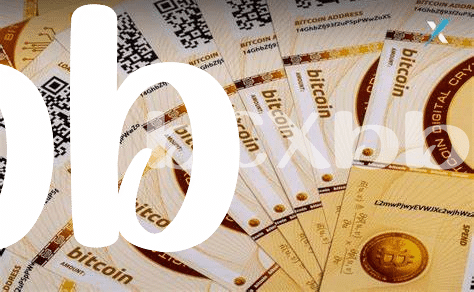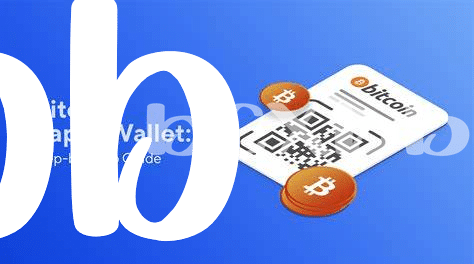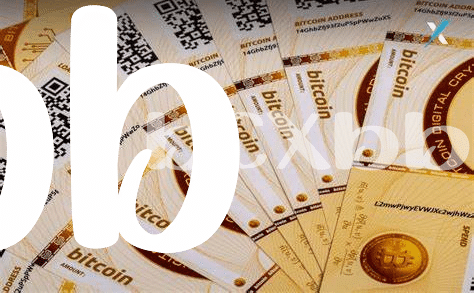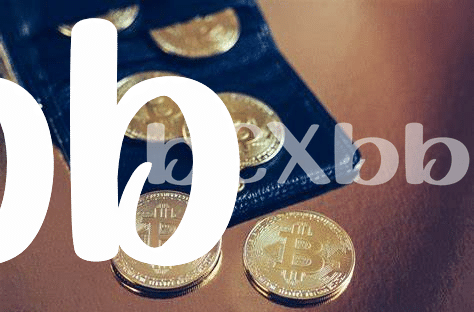What Is a Bitcoin Paper Wallet? 📄

Imagine a special kind of treasure map, one that leads not to buried gold but to digital treasure. That’s essentially what a Bitcoin paper wallet is – a physical piece of paper that holds all the important details (like the secret keys) you need to access your digital Bitcoin stash. It might sound a bit old-school in today’s swipe-and-tap world, but this piece of paper could be your golden ticket. It’s like having a bank in your pocket, without the bank.
| Feature | Description |
|---|---|
| Printable | A paper wallet is essentially a document that contains copies of the public and private keys that make up a wallet. It often includes QR codes to quickly scan and access your funds. |
| Physical Form | Being a tangible item, it can’t be hacked digitally, making it a super secure way to store your Bitcoin offline. However, it’s also susceptible to physical dangers like theft, loss, or damage. |
Crafting a Bitcoin paper wallet is a unique blend of old and new. It’s like writing down a super-secret password that opens a digital vault. Unlike a traditional wallet filled with cards and cash, this one doesn’t fold up in your pocket. Instead, it safeguards your access to the world of digital currency, ensuring that only you can reach your virtual coins.
Safety First: the Security Perks 🛡️
When it comes to keeping your digital coins safe, think of a Bitcoin paper wallet as your very own underground vault. It’s like having a secret chamber only you know about, where your treasures are kept away from prying eyes. The beauty of it lies in its simplicity and robustness—your wallet’s details are printed on a piece of paper, including the private key, which is the magical password that allows you to access and spend your Bitcoins. This means that unlike online wallets, hackers can’t digitally pickpocket your precious coins because there’s nothing stored online for them to steal. It’s akin to keeping your jewels in a safe that’s not connected to any network, making it virtually impervious to cyber-attacks. Plus, in the context of uncertainties in the digital realm, having a physical copy gives you a certain peace of mind. It’s like holding a map to a treasure only you can claim, ensuring that even in a world full of technological marvels and menaces, your bounty remains secure under lock and key—or in this case, paper and ink. For those looking to dive deeper into the world of Bitcoin, especially without traditional banking avenues, navigating the landscape can be both an enlightening and enriching journey.
The Flipside: Risks of Paper Wallets 🔓

Imagine you’re holding a special piece of paper that has the power to unlock a treasure chest; that’s essentially what a Bitcoin paper wallet is. However, like any treasure map, if it gets into the wrong hands, the treasure could be lost forever. This is one of the main risks associated with paper wallets. If someone else sees or copies your paper wallet, they could potentially access your Bitcoin. 🚨 Moreover, paper isn’t the most durable material. Over time, it can fade, tear, or even get destroyed by water or fire. Losing the wallet means losing access to your Bitcoin, as if the treasure chest was thrown into the ocean, never to be found again.
Another point to ponder is the recovery process. Unlike digital wallets, where forgotten passwords can often be reset, there’s no “forgot my wallet” option with paper. If you lose or damage it without having multiple copies or backups, accessing your Bitcoin could become an impossible task. This emphasizes the importance of handling and storing your paper wallet with extreme care, treating it as you would a precious family heirloom. Keep it safe, but always be mindful of the potential risks lurking around the corner. 🔐❌
Keeping It Cool: Offline Storage Benefits ❄️

Imagine having a place to keep your bitcoin safe, away from online hackers, almost like a treasure chest hidden in a cave. This is what offline storage of your bitcoin, like paper wallets, offers. By storing your bitcoin keys on a piece of paper, you essentially make it impossible for online thieves to access your digital treasure. It’s like having a secret map where X marks the spot, except the map is in your hands, and only you know where the treasure is. Plus, in a world where the digital realm is constantly under siege by hackers, keeping your bitcoin offline gives you that extra layer of security. It’s a simple yet effective fortress for your digital assets.
Yet, with great treasure comes great responsibility. Ensuring the physical safety of your paper wallet is key. It doesn’t face the threat of online hackers, but it does need protection from physical damage like water, fire, or simply getting lost. This method of storage turns your digital currency into something as tangible as the cash in your wallet, making it critical to take measures to protect this physical bearer of your digital assets. Want to dive deeper into the world of bitcoin and perhaps even treasure maps? Check out bitcoin educational courses explained for more insights into how to secure, use, and truly understand the potential of your digital gold.
Accessibility Issues: Getting to Your Bitcoin 🚪
Imagine you have a treasure chest, but it’s hidden so well that even you struggle to open it when you want to. This is akin to the challenge some folks face with Bitcoin paper wallets. On one hand, they’re a stronghold against hackers, as these wallets live off the grid, tucked away from online threats. But when it’s time to move your digital gold, accessing it isn’t as simple as tapping on an app. You’d need to import your wallet details into a software wallet or exchange platform to make a move, which might feel a bit like solving a puzzle if you’re not tech-savvy. Plus, each transfer from your paper wallet requires setting up a new one to maintain security, adding layers to the treasure hunt. Here’s a quick look at what you might deal with:
| Pros | Cons |
|---|---|
| 🛡️ Enhanced security from offline storage | 🔍 Can be cumbersome to access funds quickly |
| ❄️ Safe from online hacking attempts | 🔄 Requires setup of new wallet for each transaction |
**Note:** Always handle your treasure map carefully, lest it falls into the wrong hands or, worse, gets lost.
Long-term Storage: Is Paper the Answer? 🕰️

When thinking about keeping your Bitcoin safe for the long haul, imagine storing it in a way that’s not just secure, but also like tucking it into a time capsule. This is where paper wallets really shine 🕰️✨. Picture this: your Bitcoin is printed out, with all its digital details transformed into something you can hold. It feels a bit old-school, like writing letters in an age of instant messaging, but it comes with a certain peace of mind knowing it’s safe from online thieves. However, it’s not all sunshine and rainbows. The main hitch is what happens if that paper gets damaged or lost? Your digital treasure could end up as unreachable as a sunken ship. Plus, in an age where technology evolves at lightning speed, future you might find accessing this treasure requires more than just a map and a shovel. It could mean needing tools or technical help that might not be as readily available. So, while it’s a stellar option for those looking to disconnect their stash from the grid, ensuring its safety and accessibility requires a bit of old-fashioned care and forward-thinking. For anyone looking to dive deeper into how Bitcoin can play a crucial role beyond traditional banking and across borders, check out bitcoin and the unbanked explained and bitcoin and cross-border payments explained. These pieces shine a light on how Bitcoin is much more than just an investment—it’s a lifeline for many around the globe 🌍💼.
